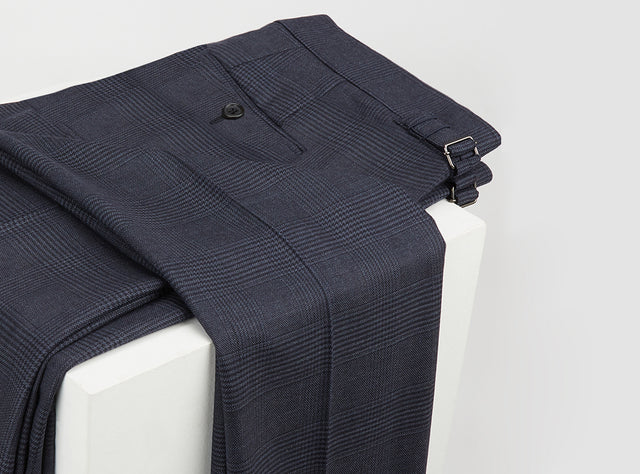Shaping History: The Archive Book
Being tasked with writing the story of Turnbull & Asser for the house's 130th anniversary has brought immense pleasure for a sartorial bloodhound such as myself, coupled with great responsibility.
As biographer of Jermyn Street's pre-eminent shirtmaker, I have been fortunate enough to have the benefit of access to the company archives, stored above the Bury Street bespoke shop and meticulously archived by Martin Wise. The firm has rarely been out of the newspapers since the move to Jermyn Street in 1903 and has appeared on stage and screen consistently since the Twenties.
Opening this archive is not dissimilar to releasing a Pandora's box filled with whispers about the world's most influential men and women. Turnbull & Asser is a member of an elite club of historic gentlemen's outfitters whose name answers the question of what Alexander McQueen, Winston Churchill, John Lennon, Twiggy, Duke Ellington, HRH Prince Michael of Kent and President Reagan have in common. The question for Turnbull & Asser's biographer is how closely to scrutinise company lore in the search for the true story.
Surprise number one was a case of mistaken identity whereby the founder, formerly known in numerous books and articles (including mine) as Reginald, proved to be called John Arthur Turnbull. As Mr Wise pointed out, his initials are clearly visible in an 1895 photograph of the first Turnbull & Asser shop on Church Place. Far from being just a salesman, Ernest Asser was a partner of John Turnbull as early as 1893, and the latter was long dead by the time Asser moved the business to its magnificent Jermyn Street premises in 1903. The importance of Ernest has clearly been underestimated.
Lauren Bacall breezed like a hurricane into the Jermyn Street shop, pointed at Eric Humbles and said, 'I need you downstairs now,' to which Mr Humbles replied, 'That's the best offer I've had all day.'
Somewhat overestimated, however, is Michael 'Mr' Fish's influence on T&A’s designs during the 'peacock revolution' that rocked 60s and 70s men's fashion. The kipper tie was his creation but Mr Fish was trading under his own label by the time Queen fashion editor Erica Crome was styling T&A innovations such as the white silk turtleneck shirt, the Cossack blouse inspired by Turnbull & Asser's costumes for customer Omar Sharif in Dr Zhivago (1965) and the striped shirt with white collar and cuffs made for Robert Redford's The Great Gatsby (1974).
My book would be infinitely shorter without the knowledge of former head cutter Paul Cuss and former managing director Kenneth Williams, who joined the company in 1959 and 1966 respectively. It was Mr Cuss who casually mentioned that Turnbull & Asser made shirts for America's first fashion superstars, Halston, Andy Warhol and Steve 'Studio 54' Rubell. Halston opened a line of enquiry about the company's relationship with the most influential fashion designers of the past half-century. British designer devotees include Norman Hartnell, Hardy Amies, Mary Quant and Bruce Oldfield, while the American house's fashion roll call includes Norman Norell, Jimmy Galanos, Bill Blass, Geoffrey Beene, Arnold Scaasi, Ralph Lauren and Marc Jacobs.
Turnbull & Asser's leading ladies - Katharine Hepburn, Jean Shrimpton, Bianca Jagger and Lauren Bacall - shared a passion for the company's style of men's shirts and pyjamas and deserve a chapter in its biography. A card from Bacall to acknowledge Mr Williams' retirement reads:
'For Ken Williams. Each night as I tuck myself into bed, I revel in my beautiful Turnbull & Asser nightshirts, which I have been wearing for years and I will continue. Bon voyage.'
Having the archive as an aide-memoire is invaluable. Eric Humbles, who with Williams and Cuss formed 'The Trinity' in the latter part of the 20th century, told me of an occasion when Bacall breezed like a hurricane into the Jermyn Street shop, pointed at him and said, 'I need you downstairs now,' to which Mr Humbles replied, 'That's the best offer I've had all day.'



